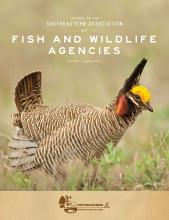Using Angler Diaries to Assess Catch and Harvest Trends for Blue Catfish and Flathead Catfish in a Missouri Reservoir
The Missouri Department of Conservation suspected that blue catfish (Ictalurus furcatus) and flathead catfish (Pylodictis olivaris) were being heavily exploited by anglers in the 22,501-ha Harry S. Truman Reservoir in west-central Missouri. A volunteer catfish angler creel was conducted during 2003_2005 to assess catch, harvest trends, and the proportional contribution of the two catfish species to the overall catfish fishery by reservoir catfish anglers. Following recruitment, a total of 308 volunteers were trained and then asked to fill out daily diary forms after each catfishing trip....
